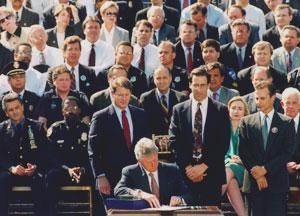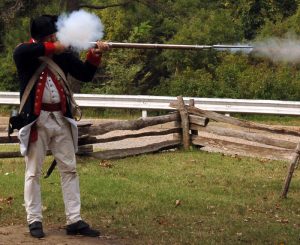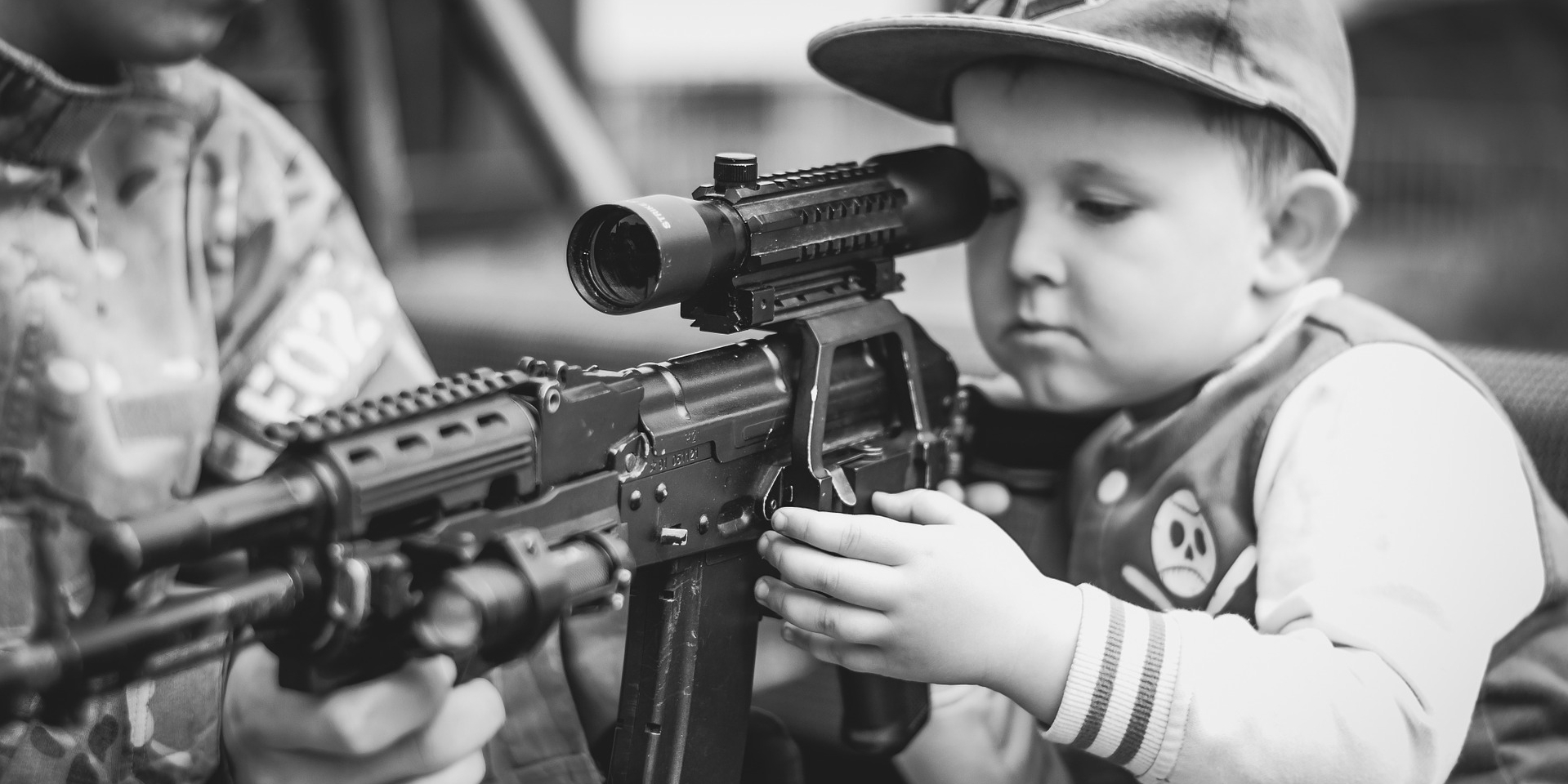The debate over gun control and how to address mass public shootings has boiled over in the wake of the shooting at Marjory Stoneman Douglas High School, where a gunman wielding an AR-15 rifle murdered 17 people and injured at least a dozen more. When it comes to mass public shootings (i.e., those involving at least four victims, excluding injuries), it’s no longer a question of if; but instead when and where. Dozens of innocents are murdered every year in what should be the most secure of places: schools, movie theaters, concert venues, churches and other venues. Traumatized families, co-workers, friends, communities, and billions of dollars in economic damage buffet America.
An ongoing Washington Post analysis has found that more than 150,000 students attending at least 170 primary or secondary schools have experienced a shooting on campus since the Columbine High School massacre in 1999. Here is a small sample of mass public shootings that took place in recent years:
- San Bernardino, CA, 2015: 14 murdered
- Orlando, FL, 2016: 49 murdered
- Las Vegas, NV, 2017: 58 murdered
- Sutherland Springs, TX, 2017: 26 murdered
- Parkland, FL, 2018, 17 murdered
Such numbers alone should have been more than enough to goad America to seek urgent solutions that demonstrate an understanding of the adage that doing the same thing over and over while expecting a different result is the definition of insanity.
Yet, year in and year out, mass public shootings take a horrific toll with no change in sight. People continue shaking their heads in disbelief at TV screens; politicians continue to console and obfuscate; legislators squirm and hope that tomorrow’s news will divert attention from today’s horror; and lobbyists wave flags and copies of the Second Amendment while throwing millions into campaigns designed to ensure that nothing changes.
Actually, while one might have expected people to respond to mass shootings by becoming more in favor of gun control, in reality, people in America are gradually becoming more pro-gun-rights. For example, between 1999 and 2014, the percentage of people saying that it is more important to control gun ownership dropped from 66% to 46%, while the percentage of people saying that it’s more important to protect the right of Americans to own guns rose from 34% to 52%.
Why is this happening? Because fear and hate drive people more than hope and facts.
So do we throw up our hands in despair and resort to clichés, prayers, demagoguery, mourning and luck to determine the future of the safety and security of people in public places? I don’t think so. Before trying to formulate a possible path, it’s encouraging to understand that this is not the first time people (even Americans) have attempted to reduce gun violence. There is evidence of success that, though imperfect, can help show the way forward.
Gun Control in Australia
An important example of how gun violence can be decreased is found in the case of Australia, a “frontier” nation of immigrants where gun ownership was traditionally high and where ideals of rugged individualism are held in high esteem (which is not dissimilar to the American ethos).

In the aftermath of a horrific mass shooting in 1996, when 29-year-old Martin Bryant murdered 35 people and injured 23 on the island of Tasmania, Australia’s center-right government enacted legislation that severely limited the availability of guns. It did so under substantial popular pressure and in the face of a relentless campaign by the Australian gun lobby (aided by America’s National Rifle Association). The legislation “banned automatic and semiautomatic firearms, adopted new licensing requirements, established a national firearms registry, and instituted a 28-day waiting period for gun purchases. It also bought and destroyed more than 600,000 civilian-owned firearms, in a scheme that cost half a billion dollars and was funded by raising taxes…The entire overhaul…took just months to implement.”
The results were noteworthy: Mass shootings in Australia dropped from 13 in the 18-year period before 1996 to zero after the Port Arthur massacre. Between 1995 and 2006, gun-related homicides and suicides in the country dropped by 59% and 65%, respectively, though these declines appear to have since leveled off. Two academics who have studied the impact of the reform initiative estimate that the gun-buyback program saves at least 200 lives each year.
Some may argue that the Australian experience is irrelevant to the United States. One might opine that Australia is sparsely populated, had fewer weapons to begin with, and (most importantly) does not have a constitutional amendment enshrining gun ownership. Meanwhile, those in favor of looking across the ocean for lessons and clues may argue that the national debate that preceded the legislation in Australia and the way it was implemented are still a worthy demonstration of how a relatively rational debate on a hotly contested subject can lead to a change in both popular and governmental cultures, a change in attitudes and behaviors at the individual and communal levels, and how all these can lead to a measurable reduction in gun violence in general and mass shootings in particular.
But we don’t really need to go as far as Australia to find workable means of mass shooting reduction measures. In fact, we can learn something from America’s own gun control experiment: the “Assault Weapons Ban,” which President Clinton signed into law in 1994.
Gun Control Actually Worked in America
The landmark Public Safety and Recreational Firearms Use Protection Act, popularly known as the Assault Weapons Ban (AWB) and actually a subsection of the Violent Crime Control and Law Enforcement Act of 1994, brought about a 10-year moratorium on manufacturing and sale to civilians of several types of semi-automatic assault weapons. The sale of ammunition magazines that were defined as “large capacity” (more than 10 rounds) was also banned. The AWB expired in 2004 and was not renewed.

The effectiveness of the AWB is hotly debated, with numbers and statistics lobbed in every direction by supporters and detractors. A particularly relevant study was undertaken by John A. Tures, a professor of political science at LaGrange College. Prof. Tures examined rampage killings, school shootings, workplace shootings, family massacres, and mass killings over religion, race and politics that occurred between 1973 and 2017. He reviewed relevant instances before, during and after the AWB. The results were conclusive: the AWB had a substantial and significant impact in reducing the average number of mass public shootings per year.
The study’s examination of 108 mass shootings found a total of 92 took place before and after the AWB, while only 16 mass shootings occurred during the 10 years that AWB was in effect. The average non-ban mass shooting was 2.705 events per year, whereas the average was 1.6 events per year during the AWB. After the AWB was discontinued, average shootings zoomed to 4.18 mass shootings per year.
It is important to stress that the AWB did not aim at and did not limit access to weapons from anyone who was interested in developing marksmanship skills or engaging in recreational hunting. The weapons and magazines covered by the ban were not designed for civilian use and could not really be used in any serious marksmanship or hunting context.
So What Can We Do to Reduce Mass Shootings?
Clearly, re-enacting restrictions would reduce gun violence. But is that enough? Not really. To achieve a significant, enduring reduction in the threat of mass public shootings (and other gun-related challenges, such as gun-related suicides, which are eight times higher in the United States than in other high-income nations), there is a need to examine the underlying foundations of this challenge: America’s gun culture and the Second Amendment.
America’s Gun Culture
Guns occupy a central and enduring place in the ways Americans perceive themselves, their identity, character, capabilities and strengths. With about 4.4% of the world population, American homes play host to more than half of the privately held weapons in the world. Since 2015, there are more privately held weapons in America than people.
America likes to think of itself as a collective of rugged pioneering individuals, forever exploring new frontiers and the dangers and challenges they pose. Guns, in this context, are an extension of the American ethos, as personified in characters such as Steve McQueen or John Wayne. Guns and the myths and ethos that accompany them are part of the American psyche, identity and sense self-confidence, and any attempt to deny the gun culture is doomed to failure in a toxic cloud of self-righteousness.
To deal with its crisis of gun violence, America will have to go to the drawing board and come up with a new gun narrative that will galvanize enough of the population to make a change. This narrative can still include an affinity to the self-reliant wielder of weapons and the right to retain them, but it will also assert that assault weapons, whether capable of shooting automatic fire or only semi-automatic fire, are not “sports” weapons. These weapons are of no use for either sports or hunting purposes. They have nothing to do with the art of shooting, and they are too difficult to control accurately to provide reasonable protection without unreasonable harm. The new narrative will recognize that these weapons were designed for one purpose—battle—and their availability should be confined to that domain. Even the family of the inventor of one such popular weapon found non-military use of the weapon unacceptable: “Our father, Eugene Stoner, designed the AR-15 and subsequent M-16 as a military weapon to give our soldiers an advantage over the AK-47.”
It is possible to change values. Consider the rapid change in America’s attitude toward same-sex marriage or the less rapid but pervasive change in how Americans have come to view smoking in public. Eliminating America’s gun culture is not viable, but changing some aspects of this culture that have been diverted from self-defense and sportsmanship to a license to kill at any cost may be difficult—particularly given the lobbyists who will fight any change —but it is a doable goal and a worthy one.
The Second Amendment
The Second Amendment is a narrative, a philosophy and a reality that needs urgent re-examination. If we accept that ideas, ideals, and political philosophies are developed and promulgated in a unique historical, sociological and economic context, we must use these insights to examine this emotionally evocative amendment. At the time of its passage (1791), there was no federal military and no powerful national guard to provide protective services to the populace. Militias were the operational framework, and the amendment reflects that reality. But this is no longer the case, and the amendment must be interpreted in its current context.

An equally serious discussion must explore the Second Amendment, its ethos, relation to myths and realities, and the place it takes within American culture. Without an understanding that a constitutional amendment cannot take precedence over the well-being of Americans, and that a proper balance needs to be struck between the preservation of individual liberties and public safety, it will be difficult to proceed.
Here, the place of states may be crucial. Looking to Congress to take the lead and inject modern-day relevance into the Second Amendment may be too tall an order. But where Congress will not step up to the plate, individual states can chart their own course and start a process of “rationalizing” the Second Amendment. Since there is a reasonably wide state-based legislative foundation in this area, along with a fair amount of court decisions and precedents at both state and national levels, policymakers and other stakeholders know the limits of their legislative room—and it seems there is quite a lot of space to insert commonsense into gun-rights arguments and legislation. It’ll be a slow process initially, but it will accelerate as states gain an understanding of the framework involved and confidence in the validity and utility of such efforts.
Another surprising political leverage point may be the nation’s youth. In the aftermath of the recent school shooting in Florida, students and teachers are showing signs of refusal to accept the political stalemate and the existing status quo. Since most of these students have not even reached a voting age, they are not a direct threat to the political structure. But they are also totally inure to lobbying efforts and to political pressures, and they may just manage to galvanize enough support either in Florida or even nationwide to force politicians to take some action or risk dealing with a furious, unfamiliar and quite mobile pre-constituency.
Looking at America’s broken political system, it’s easy to despair and become cynical about the chances of coping with a crisis on the scale of the current trend of mass shootings; but those familiar with the history of this nation and its capacity to change course, regenerate, and innovate know that the change of direction required to start dealing with the country’s mass public shooting epidemic is necessary, possible, and with a lot of effort, doable. The alternative is just too horrible to accept.


